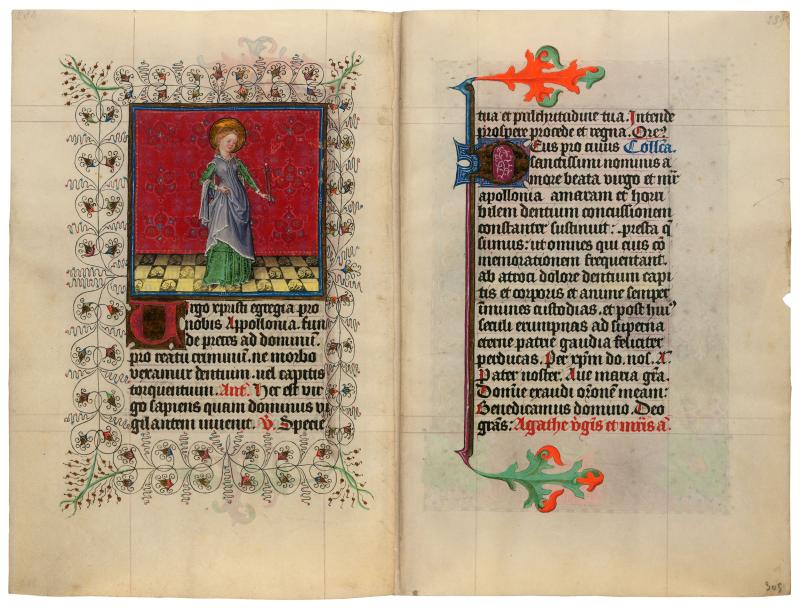
St. Apollonia
Purchased on the Belle da Costa Greene Fund with the assistance of the Fellows, 1963
Appolonia was commonly invoked against toothaches and other dental problems because of the torture she endured before martyrdom: she had her teeth pulled out before leaping onto the pyre her tormenters had prepared for her. Although she was revered as a martyr, her active role in her own martyrdom – essentially suicide – was problematic (it was discussed by Augustine in his City of God). This may explain why the saint does not hold the traditional palm of martyrdom, but simply her attribute, a pair of long pincers with a tooth. Her attire is rich: she wears a hair-net crown and an ermine-trimmed gray robe over a green gown of brocade fabric with lace cuffs. Her long blonde braid drapes over her shoulder, to the end of which are tied decorative beads or bells. The crouching dog in the tiles has no apparent connection to the saint.
